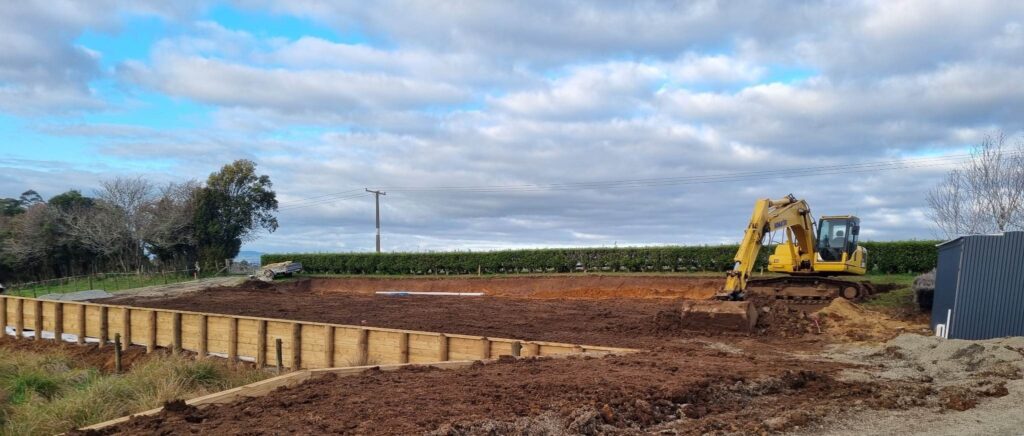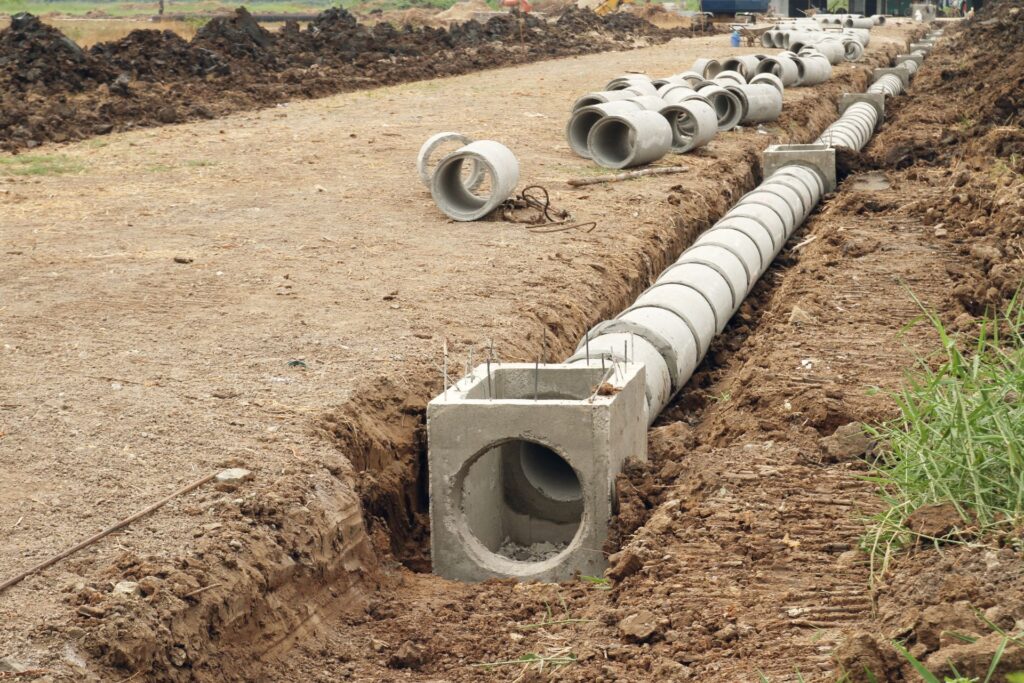Excavators are powerful machines that are essential for many construction projects. They are used to dig and move large amounts of dirt, rocks, and debris. But how much can an excavator dig in a day? This is a common question that many people ask when planning a construction project.
Understanding an excavator’s capacity is crucial to estimating how much work it can do in a day. Excavators come in different sizes and have different digging capacities. Larger excavators can move more dirt and debris than smaller ones. The type of excavation project also affects how much an excavator can dig in a day. For example, digging a foundation for a building requires more work than digging a trench for a pipeline.
Factors such as the operator’s skill, the type of soil, and weather conditions can also affect an excavator’s productivity. In this article, we will explore these factors and provide tips on how to estimate an excavator’s productivity. We will also discuss safety and efficiency measures that can help you get the most out of your excavator.
Key Takeaways
- An excavator’s capacity and the type of excavation project affect how much it can dig in a day.
- Factors such as the operator’s skill, soil type, and weather conditions can affect an excavator’s productivity.
- Safety and efficiency measures can help improve an excavator’s productivity and prevent accidents.
Table of Contents
Understanding Excavator Capacity
When it comes to excavating, one of the most important factors to consider is the capacity of the excavator. This refers to the amount of material that an excavator can move in a given period of time, usually measured in cubic yards or cubic meters.
The capacity of an excavator is determined by several factors, including the size of the bucket, the type of material being excavated, and the speed and efficiency of the operator. Excavators come in a range of sizes, from small machines that can fit through narrow spaces to large machines capable of digging deep trenches and excavating large areas.
The size of the bucket is one of the most important factors in determining the capacity of an excavator. Buckets come in a range of sizes, from small buckets that can hold a few cubic yards of material to large buckets that can hold several cubic meters. The size of the bucket will determine how much material the excavator can move in a single pass.
The type of material being excavated is also an important consideration. Some materials, such as loose soil or sand, are easier to excavate than others, such as hard rock or concrete. The type of material being excavated will affect the speed and efficiency of the excavator, as well as the amount of wear and tear on the bucket and other components.
In general, the capacity of an excavator can range from a few cubic yards per hour to several cubic meters per hour, depending on the size of the machine, the size of the bucket, and the type of material being excavated. It is important to choose the right excavator for the job, taking into account the size of the area to be excavated, the type of material being excavated, and the speed and efficiency of the operator.
Overall, understanding excavator capacity is essential for any excavation project. By choosing the right excavator and bucket size, and by using the right techniques and equipment, we can ensure that our excavation projects are completed efficiently and safely.
Factors Affecting Excavation
Soil Conditions
The type of soil being excavated is a significant factor in determining how much an excavator can dig in a day. Hard and rocky soil can slow down the excavation process, while soft soil can be dug up more quickly. Soil type can also affect the type of excavator that is best suited for the job.
Operator Skill
The operator’s skill level is another important factor. An experienced operator can work more efficiently and effectively, allowing for faster excavation. Inexperienced operators may struggle to handle the excavator properly, leading to slower progress and potential damage to the equipment.
Type of Excavator
The type of excavator being used can also affect how much can be dug in a day. Different excavator types are designed for different tasks, and some may be better suited for certain soil conditions or excavation depths. Choosing the right excavator for the job can help maximize productivity.
Digging Speed
The speed at which the excavator can dig is also a crucial factor. Some excavators are designed to dig faster than others, and the digging speed can be affected by the soil conditions and the operator’s skill level. Maximizing digging speed without compromising safety is key to achieving high productivity.
In summary, several factors can affect how much an excavator can dig in a day, including soil conditions, operator skill, excavator type, and digging speed. By considering these factors and optimizing each one, we can achieve maximum productivity and efficiency in excavation projects.
Excavator Productivity Estimation
When it comes to estimating excavator productivity, there are several factors to consider. In this section, we’ll cover the basics of calculating volume, time and cycles, and digging depth.
Calculating Volume
The first step in estimating excavator productivity is to calculate the volume of material to be moved. This can be done using a variety of methods, including:
- Surveying the site and using software to create a 3D model
- Using ground-penetrating radar to determine the depth and location of underground utilities
- Estimating the volume based on the dimensions of the excavation area
Once you have an accurate estimate of the volume, you can move on to calculating the time and cycles required to complete the excavation.
Time and Cycles
To estimate the time and cycles required to complete the excavation, you’ll need to take into account a variety of factors, including:
- The type and size of the excavator being used
- The type and density of the material being excavated
- The skill level of the operator
- The presence of any obstacles or underground utilities
One way to estimate the number of cycles required to complete the excavation is to use the following formula:
Cycles = Volume ÷ Bucket Capacity
Once you have an estimate of the number of cycles required, you can calculate the time required by multiplying the number of cycles by the time it takes to complete one cycle.
Digging Depth
The digging depth of an excavator is another important factor to consider when estimating productivity. The maximum digging depth will depend on the size and type of excavator being used, as well as the type of material being excavated.
To ensure accurate calculations, it’s important to take into account the actual digging depth of the excavator, as well as any restrictions or limitations that may affect the excavation process.
By taking into account all of these factors, we can make accurate estimates of excavator productivity and ensure that our projects are completed on time and within budget.
Types of Excavation Projects
Construction Projects
When it comes to construction projects, excavators are used to clear land, dig foundations, and prepare sites for building. The amount of excavation required for a construction project can vary greatly depending on the size and scope of the project. For example, a small residential construction project may only require a few days of excavation work, while a large commercial project could take weeks or even months to complete.
Landscaping
Excavators can also be used for landscaping projects, such as creating ponds, removing trees, and grading land. Landscaping projects typically require less excavation work than construction projects, but the precision of the work is often more important. Excavators can be used to create precise contours and grades for landscaping projects, ensuring that the final product looks exactly as intended.
Trenching
Trenching is another common use for excavators. Trenches are often dug for utility lines, such as water, gas, and electric lines. Excavators can quickly and efficiently dig trenches of varying depths and widths, making them an ideal tool for trenching projects.
Overall, the type of excavation project will determine how much an excavator can dig in a day. Construction projects typically require the most excavation work, while landscaping and trenching projects may require less. However, regardless of the project type, an experienced excavator operator can make all the difference in the efficiency and effectiveness of the excavation work.
Renting an Excavator
If you need to rent an excavator, there are several factors to consider before making a decision. In this section, we will discuss the cost factors and the request process involved in renting an excavator.
Cost Factors
The cost of renting an excavator can vary widely depending on several factors. Here are some of the most important factors to consider:
- Size of the excavator: Larger excavators will generally cost more to rent than smaller ones.
- Duration of the rental: The longer you need the excavator, the more it will cost.
- Location: The rental price may be affected by the location of the rental company and the job site.
- Accessories: If you need any additional accessories, such as buckets or hammers, the rental price will increase accordingly.
It’s important to consider all of these factors when determining the cost of renting an excavator. Be sure to get a detailed quote from the rental company that includes all applicable fees and charges.
Request Process
The process of requesting an excavator rental can vary depending on the rental company. Here are some general steps to follow:
- Determine your needs: Before contacting a rental company, determine the size and type of excavator you need, as well as any additional accessories.
- Contact rental companies: Research rental companies in your area and contact them for quotes. Be sure to provide all necessary information about your job site and rental needs.
- Compare quotes: Once you have received several quotes, compare them to determine the best option for your needs and budget.
- Reserve the excavator: Once you have selected a rental company, reserve the excavator for the desired dates and provide any necessary payment or deposit.
By following these steps, you can ensure a smooth and successful rental experience.
Safety and Efficiency Measures
When operating an excavator, safety and efficiency are of utmost importance. We take several measures to ensure that we maintain a high level of safety and efficiency throughout the excavation process.
Safety Measures
We always prioritize safety when operating an excavator. Before starting the excavation process, we conduct a thorough safety inspection of the equipment to ensure that it is in good working condition. We also ensure that the site is free of any hazards that could pose a risk to the operators or anyone working around the site.
During the excavation process, we take measures to prevent accidents and injuries. We mark the boundaries of the excavation site clearly and ensure that the area around the site is cordoned off to prevent unauthorized access. We also ensure that all operators wear appropriate personal protective equipment (PPE) such as hard hats, safety glasses, and safety boots.
Efficiency Level
Efficiency is also crucial when it comes to excavating. We strive to maximize our efficiency levels to ensure that we complete the excavation process within the set timelines and budget. We achieve this by using well-maintained equipment and ensuring that all operators are well-trained and experienced.
We also plan our excavation process carefully to minimize any downtime. This includes identifying any potential problems that could arise during the excavation process and coming up with solutions beforehand.
Excavator Plans
Before starting any excavation process, we come up with a detailed plan that outlines the scope of the project, the equipment to be used, and the timeline for completion. This plan is crucial in ensuring that we maintain a high level of efficiency and safety throughout the excavation process.
We also ensure that we have the necessary permits and approvals before starting any excavation process. This helps us avoid any legal issues that could arise during the excavation process.
In conclusion, safety and efficiency are crucial when it comes to excavating. By taking measures to ensure that we maintain a high level of safety and efficiency, we are able to complete the excavation process within the set timelines and budget while minimizing any risks or accidents.
Excavator Mechanic and Maintenance
Maintaining an excavator is crucial to ensure it runs smoothly and efficiently. As excavator mechanics, we understand the importance of regular maintenance and repairs to keep the heavy equipment in top condition.
One of the most critical components of an excavator is its hydraulic system. It is essential to regularly check and change the hydraulic fluid to prevent damage to the system. We recommend changing the hydraulic fluid every 1,000 hours of operation or at least once a year, whichever comes first. We also suggest checking the hydraulic filters during every fluid change and replacing them if necessary.
Another crucial aspect of excavator maintenance is inspecting the undercarriage. The undercarriage is the foundation of the machine, and regular maintenance can help prevent costly repairs down the road. We suggest checking the undercarriage for wear and tear, loose bolts, and damaged components. If we find any issues, we recommend repairing or replacing them immediately.
In addition to the hydraulic system and undercarriage, we also suggest checking the engine, electrical system, and other components regularly. Preventative maintenance can help keep your excavator running smoothly and prevent unexpected downtime.
Overall, proper maintenance is essential for any heavy equipment, especially hydraulic excavators. As excavator mechanics, we are confident in our ability to maintain and repair these machines to ensure they operate efficiently and safely.
Frequently Asked Questions
What is the average excavation productivity rate per day for an excavator?
The average excavation productivity rate per day for an excavator depends on various factors such as the type of soil, the size of the excavator, and the experience of the operator. However, on average, an excavator can dig between 500 to 1,000 cubic meters of soil per day.
What is the maximum excavation capacity in tons for an excavator?
The maximum excavation capacity in tons for an excavator varies depending on the size of the machine. Generally, a small excavator can excavate up to 10 tons of soil, while a large excavator can excavate up to 100 tons of soil.
How do you calculate the productivity of an excavator?
To calculate the productivity of an excavator, you need to divide the total amount of soil excavated by the number of hours worked. For example, if an excavator excavates 1,000 cubic meters of soil in 8 hours, the productivity rate would be 125 cubic meters per hour.
How much excavation can be done in a day by an excavator?
The amount of excavation that can be done in a day by an excavator depends on various factors such as the size of the machine, the type of soil, and the experience of the operator. On average, an excavator can dig between 500 to 1,000 cubic meters of soil per day.
What is the bucket capacity of an excavator?
The bucket capacity of an excavator varies depending on the size of the machine. Generally, a small excavator has a bucket capacity of 0.1 to 0.5 cubic meters, while a large excavator has a bucket capacity of 1 to 5 cubic meters.
How deep can a 1 tonne excavator dig?
A 1 tonne excavator can dig up to 2.5 meters deep, depending on the type of soil. However, it is important to note that the digging depth may vary depending on the size of the machine and the experience of the operator.
About the Author:
Mike Veail is a recognized digital marketing expert with over 6 years of experience in helping tradespeople and small businesses thrive online. A former quantity surveyor, Mike combines deep industry knowledge with hands-on expertise in SEO and Google Ads. His marketing strategies are tailored to the specific needs of the trades sector, helping businesses increase visibility and generate more leads through proven, ethical methods.
Mike has successfully partnered with numerous companies, establishing a track record of delivering measurable results. His work has been featured across various platforms that showcase his expertise in lead generation and online marketing for the trades sector.
Learn more about Mike's experience and services at https://theleadguy.online or follow him on social media:


















